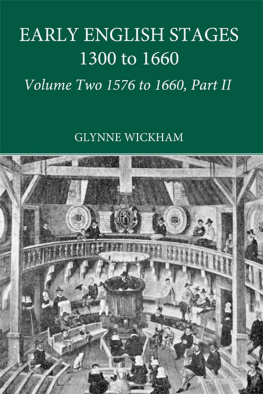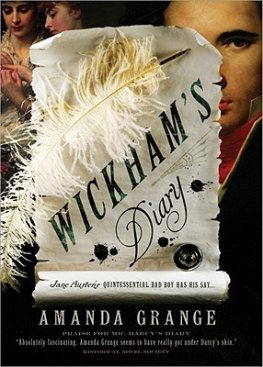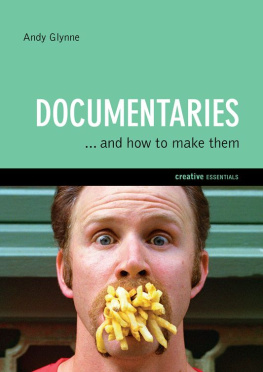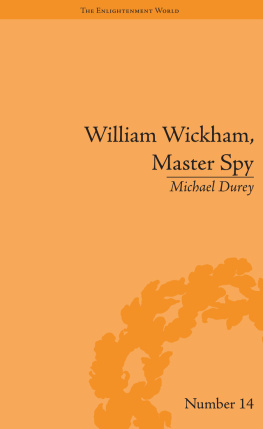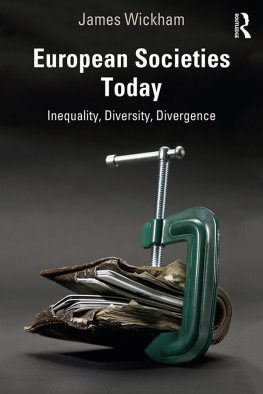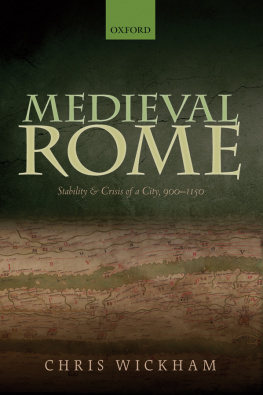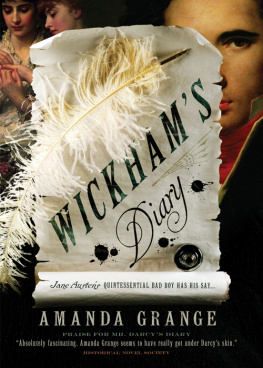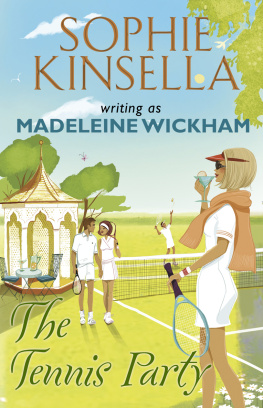Wickham Glynne - Part I - Early English Stages 1576-1600
Here you can read online Wickham Glynne - Part I - Early English Stages 1576-1600 full text of the book (entire story) in english for free. Download pdf and epub, get meaning, cover and reviews about this ebook. publisher: Taylor and Francis, genre: Religion. Description of the work, (preface) as well as reviews are available. Best literature library LitArk.com created for fans of good reading and offers a wide selection of genres:
Romance novel
Science fiction
Adventure
Detective
Science
History
Home and family
Prose
Art
Politics
Computer
Non-fiction
Religion
Business
Children
Humor
Choose a favorite category and find really read worthwhile books. Enjoy immersion in the world of imagination, feel the emotions of the characters or learn something new for yourself, make an fascinating discovery.
- Book:Part I - Early English Stages 1576-1600
- Author:
- Publisher:Taylor and Francis
- Genre:
- Rating:5 / 5
- Favourites:Add to favourites
- Your mark:
- 100
- 1
- 2
- 3
- 4
- 5
Part I - Early English Stages 1576-1600: summary, description and annotation
We offer to read an annotation, description, summary or preface (depends on what the author of the book "Part I - Early English Stages 1576-1600" wrote himself). If you haven't found the necessary information about the book — write in the comments, we will try to find it.
Part I - Early English Stages 1576-1600 — read online for free the complete book (whole text) full work
Below is the text of the book, divided by pages. System saving the place of the last page read, allows you to conveniently read the book "Part I - Early English Stages 1576-1600" online for free, without having to search again every time where you left off. Put a bookmark, and you can go to the page where you finished reading at any time.
Font size:
Interval:
Bookmark:

1300 to 1660
Volume Two 1576 to 1660, Part I
By
Glynne Wickham
Volume One 1300 to 1576
Volume Two 1576 to 1660, Part I
Volume Two 1576 to 1660, Part II
Volume Three Plays and their Makers to 1576
Volume Four Requiem and an Epilogue
ENGLISH
STAGES
Volume Two 1576 to 1660, Part I
by
GLYNNE WICKHAM

London and New York
First published 1963 by Routledge & Kegan Paul Ltd
This edition first published 2002
by Routledge
2 Park Square, Milton Park, Abingdon, Oxfordshire 0X14 4RN
711 Third Avenue, New York, NY 10017
Routledge is an imprint of the Taylor & Francis Group, an informa business
1963, 2002 Glynne Wickham
Typeset by RefineCatch Limited, Bungay, Suffolk
All rights reserved. No part of this book may be reprinted or
reproduced or utilised in any form or by any electronic,
mechanical, or other means, now known or hereafter
invented, including photocopying and recording, or in any
information storage or retrieval system, without permission in
writing from the publishers.
British Library Cataloguing in Publication Data
A catalogue record for this book is available from the British Library
ISBN 0415197821 (set)
ISBN 0415197848 (volume 2, part I)
Publisher's note
The publisher has gone to great lengths to ensure the quality of this reprint
but points out that some imperfections in the original book may be apparent.

Inigo Jones Backcloth for the first scene, Luminalia (1638). (See , p. 379.)
ENGLISH
STAGES
Volume Two 1576 to 1660, Part I
by
GLYNNE WICKHAM
Head of the Department of Drama, University of Bristol

Routledge and Kegan Paul
LONDON
TO
MY WIFE
I N Volume One I have tried to collect together a wide variety of source material relating to stage practice in the Middle Ages. The governing factor in the choice of this material was the idea that what is seen in the theatre matters at least as much to an audience as what is heard: in other words, that records of spectacle are at least as worthy the attention of historians as literary texts. As a result of this attempt to give equal weight to the visual and aural elements of dramatic art and to regard audiences as individual human beings, it became clear that our early drama could not be regarded as a self-conscious, self-contained art form. Many varied pursuits and pastimes of everyday life contributed much more to stage practice in the Middle Ages than anything deliberately formulated by theorists or critics of the time as indigenous or proper to the medium.
Colour symbolism in stage costume, for example, was not, as we might think, the bright invention of some designer or producer, but was taken over from both the ecclesiastical iconography of mosaic, fresco, stained glass and statuary and from the conventions of Heraldry: as an identification device long familiar to society at large, it was therefore a good one for identifying characters in a play. Or again, music in stage directions concerning action involving God or angels is there not for emotive effect or atmosphere, as we might think, but because music was harmony and so was heaven. Music was heaven and heaven was musicas everyone knew who had ever read Augustine or Boethius, and as others who could not read had come to know by word of mouth from those who could.recognize that the audiences for this theatre possessed the capacity to accept mimetic action on two levels simultaneously. Where actor and character were inevitably fused within the same person, they nevertheless remained distinguished from one another for the beholders as the person representing and the person represented. This dual concept of the actor at work on the stage is about as far removed as can be imagined from the modern ideal of equating the character with the acting of it so closely as to simulate actuality of feeling and behaviour down to the smallest detail. This double image, not the photographic reproduction of the seemingness of things, was their stage realism. Always, contemporary philosophy dictated the inner meaning of the things said or done and made explicit in the drama; contemporary practice in real life dictated the form in which it was expressed on the stage. The forms existed to express the meaning and not as ends in themselves. Plot, character and language were framed and handled to compel attention, and attention was focused on the meaning which, in its turn, had immediate significance and relevance both for the individual spectator and for the society of which the individuals were members.
Armed with this source material, it is possible in this second volume of Early English Stages to trace the progress of this tradition through the sixteenth and seventeenth centuries, assuming that its basically emblematic stage-conventions will survive until changes in philosophical thought and in real life practice have become large enough to make those conventions meaningless to their audiences. Revolutionary changes in religious and political thought on the one hand, and in social behaviour on the other, characterize the sixteenth century in England. It is thus natural to anticipate some reflection of them in theatre practice both on the stage and in the auditorium. By far the most important of these three changes is that in religious thought, characterized by the Reformation and, specifically, by the transference of the headship of the Church of England from the Pope to the sovereign. The sovereign's assumption of ultimate authority in doctrinal matters automatically translated the subject matter of a predominantly religious drama into a political issue. State censorship becomes inevitable, and the very concept of drama as a means by which to mirror the cosmos in art is itself threatened: by 1660 this concept is virtually dead.
The concept of independent nationhood, developed at the expense of internationalism, marks the second change in the thinking of sixteenth century society that finds expression in the theatre. It is reflected most acutely in the formulation of dramatic theory differing widely from country to country, but common to all in one respect: a gradual exposure of divergence between the characteristics of life as lived in a country and the traditional stage conventions employed to depict it in the theatre. Devices evolved through an approach to art which sought to make eternity live in the present came to seem inadequate for the full depiction of the particular national and individual moment. Where England and the English are concerned, Ben Jonson crystallizes this sentiment in his Prologue to Every Man In His Humour.
Though neede make many Poets, and some such
As art, and nature have not betterd much;
Yet ours, for want, hath not so lov'dthe stage,
As he dare serve th'illcustomes of the age:
Or purchase your delight at such a rate,
As, for it, he himselfe must justly hate.
Font size:
Interval:
Bookmark:
Similar books «Part I - Early English Stages 1576-1600»
Look at similar books to Part I - Early English Stages 1576-1600. We have selected literature similar in name and meaning in the hope of providing readers with more options to find new, interesting, not yet read works.
Discussion, reviews of the book Part I - Early English Stages 1576-1600 and just readers' own opinions. Leave your comments, write what you think about the work, its meaning or the main characters. Specify what exactly you liked and what you didn't like, and why you think so.


